The Acer Swift 3 SF314 Notebook Review: Swift Gets Swifter With Ryzen 4000
by Brett Howse & Andrei Frumusanu on May 5, 2020 8:00 AM ESTWireless
Acer has fitted the Intel AX200 Wireless adapter in their Swift 3, and for good reason. Intel’s wireless networking adapters have been the cream of the crop in the PC space for some time, with rock solid stability, and excellent performance. The AX200 is the new Wi-Fi 6 adapter, adding 160 MHz channel support and higher QAM orders to provide much higher peak performance than Wi-Fi 5, while at the same time offering better congestion control as well.
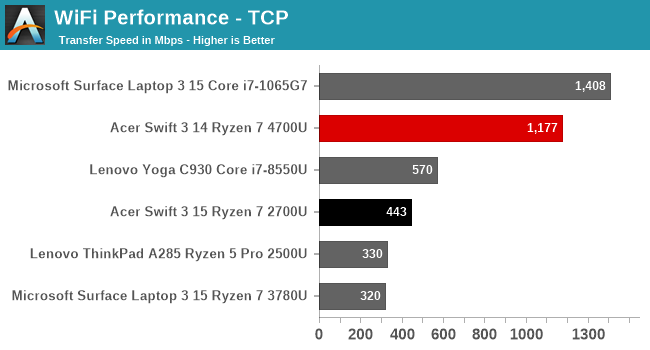
The Acer Swift 3 has very good networking performance from the 2x2 networking solution, hitting over 1.1 Gbps transfer speeds on our TCP test. We are using the ASUS ROG Rapture GT-AX11000 router, and if you’d like to check out more about the new Wi-Fi 6 testing, please check out our overview.
Audio
The Acer Swift 3 features DTS Audio with stereo front-facing speakers, and dual-microphones for Cortana support. Although the speakers are forward facing, they are on the bottom of the notebook, so can be obstructed depending on the surface the notebook is on.
Sound quality is quite good, with reasonable bottom end response for a notebook of this size. The speakers do not get overly loud, measuring 75 dB(A) one inch over the trackpad, but the sound was free from distortion.
Thermals
Thin, light, and performance. The holy trinity of laptop design. It is not always easy to achieve. Acer has a thin and light laptop, with a new 7 nm AMD Ryzen 7 4700U onboard which should help them out, but to see how the laptop responded it was run through an extended stress test of the CPU, with the GPU kicked in near the end.
As with most modern CPUs, the Ryzen 7 quickly ramps up well past its target thermal design power, hitting around 30 Watts draw at the start, but as the test goes on, that value falls back to around 18 Watts. But the power line shows several spots where it dropped back due to thermal capacity. A perfect result here would be a straight line for the CPU frequency but struggles to maintain its boosted frequency. The laptop does not seem to find a sweet spot where it can maintain temperatures either, it instead bounces from maximum power draw to minimum. The GPU also is not consistent when it is turned on around the 2300 second mark.
As this is a full stress test, it can be unfair since you are unlikely to run into a scenario where you use the system at 100% load for such an extended duration. To see how the laptop performs in a more real-world test, it was again tested using Far Cry 5 as a load source.
If anything, the results were even more disappointing. The laptop really struggled with its thermals, dropping the framerate into single digits often. The device attempted to run at around 18 Watts of power draw, slightly over the 15 Watt TDP, but in fact only averaged around 8 Watts during this run.
The laptop does not get overly loud during this load, only hitting around 45 dB(A), but clearly the included cooling system is inadequate for very heavy loads, such as gaming. Far Cry 5 is a demanding game, especially on CPU, so the SoC is even more taxed trying to balance the CPU and GPU, but overall this is a very poor result.
Software
Acer includes a few utilities which are useful, and a few that are not, such as some Norton Antivirus with a short trial period. But it is worth looking at a few pieces of software and included utilities.
The AMD Radeon Settings gives you control over the GPU settings, including disabling Vari-Bright, and seeing the system settings. It is a nice looking utility, but other than providing a few options to enable or disable, but it would be nice if you could use it to manage driver updates for the GPU rather than just copy the version numbers.
If you do want to update drivers, you can use the Acer Care Center, where you can also manage recovery media creation and support requests. This is now a standard feature on all notebooks, and Acer’s implementation is attractive and easy to use.
Acer includes a couple of links to e-tailers like Amazon and Booking.com, which are easily deleted, but also are a quick reminder that margins are thin when prices are this low.


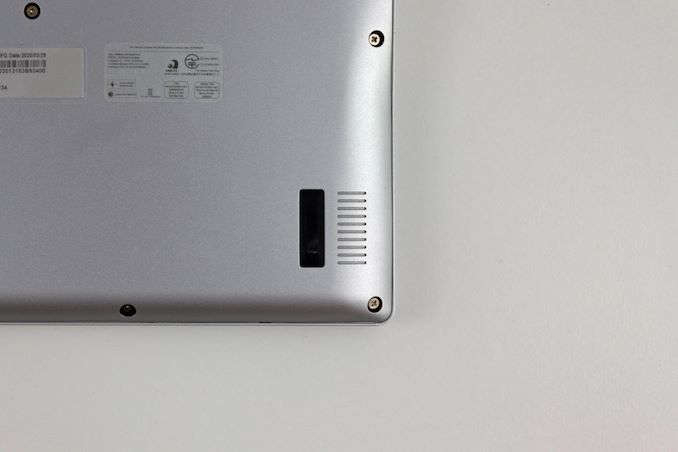

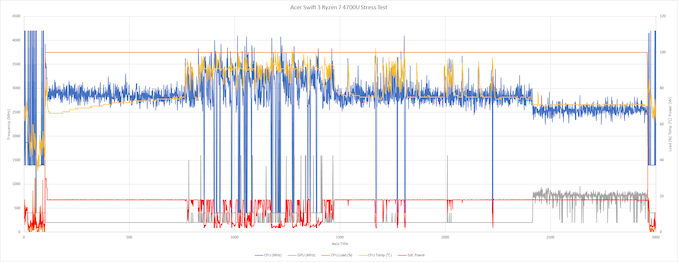
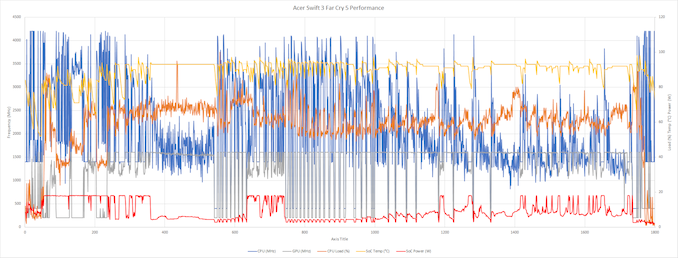
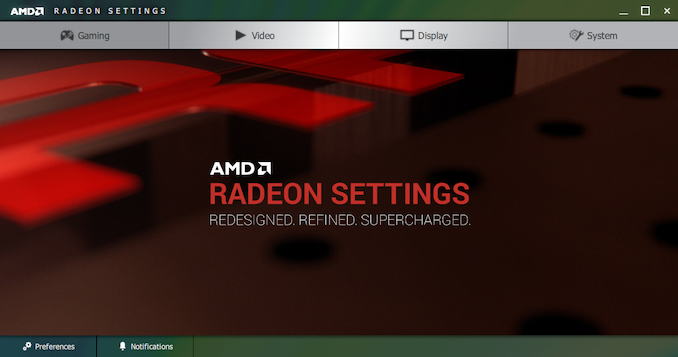

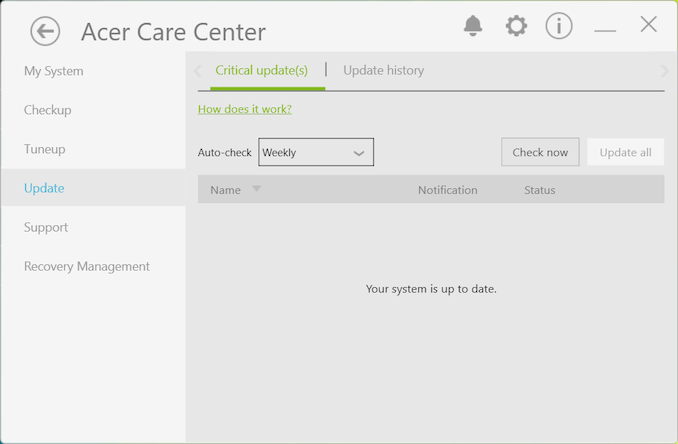








191 Comments
View All Comments
lightningz71 - Tuesday, May 5, 2020 - link
It appears that the Acer Swift design philosophy just doesn't translate for anything that requires a high steady-state power draw and thermal load. The Swift had the same issues with the 2XXX and 3XXX series chips as well, so this is nothing new. This is something that Acer has deliberately chosen to make a design trade-off for: sacrifice some thermal dissipation ability to keep the product in the size class that it is intended for.It will be interesting to see the benchmarks on the 4500U in this platform. It was shown in benchmarks of previous versions of the swift that lower end APUs actually performed better in gaming than the top end parts because the system was better able to manage the thermal output and the APU was better able to keep consistent clocks. While the absolute performance was still lower than notebooks with better thermal management implementations, it was a better gaming performer than the top end SKU.
neblogai - Tuesday, May 5, 2020 - link
Generally, you are not complaining about Acer, but about U-series chips from both Intel or AMD. The philosophy of laptops with ~15W chips is that these chips are used in ultrabooks that are responsive and fast in short boosts, and not made for steady power (even if there are some premium devices that offer both).fmcjw - Tuesday, May 5, 2020 - link
The 2019 Swift 5 and LG Gram series were matched to the thermal promises of Intel 10nm chips that took 2 generations to arrive, and maybe 5nm AMD SoCs in 2021 since AMD decided to rush to market with last generation GPU architecture in early 2020. Perhaps with software or AI based optimization, there can be a more optimal mix of processes split between the CPU versus the GPU for best performance within thermal constraints. Not every task is as clear cut as gaming routines, where more of the work is performed more efficiently on the GPU. I'm not sure that will happen though, as such software optimization has the least return on investment outside cloud and data center applications. Not even Apple wants to do it for the 2020 Macbook Air, thermally crippling a fine Intel chip and resolving the issue by sticking a more powerful cooling solution in a Macbook Pro (and charge more).For 2020, Acer managed to get the Swift 3 down to 1.2kg from 1.45kg of the 2019 model through the use of aluminum AND magnesium (not just aluminum as the article states). The 2020 Swift 5 maintains a 1kg weight while including a rare-breed matte touch screen. The Swift 5 is the model you want to get for 100% sRGB at a $300 premium. I think the only reason these fine machines sell for $600 to $900 for a mid-range configuration is the thermally constrained performance of the more stubbornly ambitious SoCs.
Which if they can think outside the box can easily resolve by selling a fan-assisted cooling dock and unleash the full potential of the SoC we already paid for (and charge more).
Fulljack - Tuesday, May 5, 2020 - link
while Vega here is based on GCN 5 and not RDNA, it doesn't mean it's an outdated architecture. AMD did enhance the Vega arch for Ryzen 4000, with 56% improvement over Vega arch found in Ryzen 3000. overall, with enhanced arch, reduced core count, and higher clock, AMD did deliver 2020 Vega 8 that performs 28% better than 2019 Vega 11.https://www.anandtech.com/show/15324/amd-ryzen-400...
Oxford Guy - Thursday, May 7, 2020 - link
All irrelevant when the laptop's cooling is so pathetic:"The laptop really struggled with its thermals, dropping the framerate into single digits often. The device attempted to run at around 18 Watts of power draw, slightly over the 15 Watt TDP, but in fact only averaged around 8 Watts during this run."
csp4me - Tuesday, May 5, 2020 - link
Acer Swift 3 and 5 are in the market for lightweight, cool & quiet laptops within thermal constraints, thus ~ 18W tdp, and throttling under stress test.For the same budget of Acer Swift 5 ~ $900 you can find laptop models with the same quality display or better and also better thermals ~ 28W-35W at the expense of weight 1.3-1.4kg and noise/heat during heavy loads. Examples Lenovo Ideapad S540-13 both AMD or Intel, or Yoga Slim 7 both AMD or Intel.
psychobriggsy - Tuesday, May 5, 2020 - link
When you buy low power laptops - Y or U series TDPs - you are really looking out for these things1) Sustained Single Core Clock
2) Sustained All-Core Clock
3) Race-To-Sleep Single Core Turbo Boost (and the time it can sustain this)
4) Race-To-Sleep All-Core Turbo Boost (and the time it can sustain this)
1 and 2 are what your gaming sessions will occur in. 3 and 4 might help in some particularly CPU-heavy parts, but only for small periods of time.
This is the problem Intel have with their 14++++ chips - 1 and 2 cannot be raised in the TDP they are restricted to (unlike desktop, where they can simply lie about the figures, in a laptop this will affect battery life and be easily detected), so they hype 3 and 4 to compensate.
AMD on 7nm does well in all four measures, but you should never think you'll get long-term turbo clock performance from any mobile chip. I don't know if Renoir has a 4C turbo that can last longer than the 8C turbo for lightly threaded loads.
fmcjw - Tuesday, May 5, 2020 - link
Can a Y or U series SoC be considered the equivalent of an H series SoC internally, with a beefier cooling solution and reduced I/O capabilities externally? I imagine not just the I/O or cooler but also the capacitors and power circuitry need to be higher specified for the higher sustained load.It's just that few makers even try to create a balanced system around the U or Y series, letting Turbo Boost go wild to impress for the first minute or two, or restraint the system thermally to achieve longer battery life even when you can plug it in.
T1beriu - Tuesday, May 5, 2020 - link
>the mobile chips here only feature half the L3 cache compared to its desktop counterpartsSmall correction. Ryzen 4000 actually has a quarter.
ads295 - Tuesday, May 5, 2020 - link
Acer has consistently impressed me with their attention to detail. There are so many moronic OEMs that put in a single module of RAM but even my 2016 Acer E5-553-T4PT came with 2 modules of 2GB DDR4 RAM to enable the A10-9600P to run in dual channel mode.I suppose they don't get paid to debilitate AMD setups.